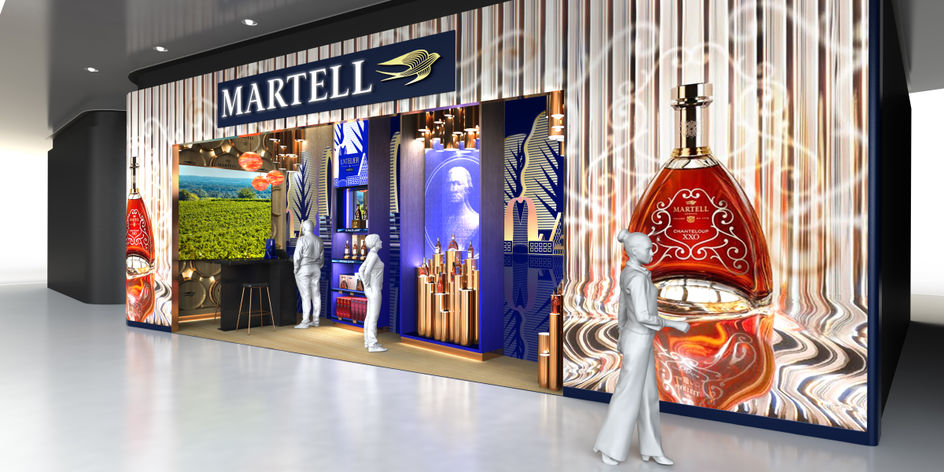IWSR’S 8 DRIVERS OF CHANGE FOR BEVERAGE ALCOHOL IN 2023 AND BEYOND
New research from global drinks analyst IWSR indicates that the trends that previously shaped the global beverage alcohol marketplace will be transformed over the next five years as the world emerges from the Covid-19 pandemic and into a period of growing economic instability.
The London-based company stated: “The effects of these shifts will be wide-ranging, from the growing importance of drinking at home (the home premise) to a moderation trend increasingly driven by the need to cut household spending.”
Below are the eight drivers (in no particular order) that IWSR predicts will be shaping the future of drinking:
Premiumisation driven by ‘mass affluent’ consumers
The world is entering a period of economic fragility. Those who are financially stable – typically consumers with lower debt levels and secure jobs – will be targets for premium-and-above spirits and wine brand owners. This is a shift from pandemic times when Millennials led the global consumption bounce-back in 2021 in markets such as the US, UK, France, Germany, and Brazil.
Now, economic instability has left younger consumers with less secure finances and employment prospects. In China, for example, IWSR consumer data show a shift in the alcohol-drinking population with fewer 18−24s, possibly connected to 20% unemployment among graduates.
China peaks, but the US and India are positioned well for spirits
China’s leadership in luxury spirits will be threatened by the US in the next few years. The US status spirits market, spearheaded by high-end agaves, is forecast by IWSR to add the most value to this category than any other market over the next five years. This will bring it almost level with China. India is also poised to make strong spirits gains thanks to its booming economy; rising consumer incomes; market recovery and post-pandemic growth; and strong consumer confidence.

Factors that may dampen China’s momentum include a government clampdown on conspicuous consumption, falling consumption among younger drinkers, and lower GDP expectations. This outlook follows a period of strong growth for high-end spirits in China, boosted by e-commerce gains during Covid-hit 2020, as well as the establishment of Hainan as a key duty-free destination.
Pockets of growth for beer
The best opportunities for beer will be in India, Latin America, and Africa. IWSR expects global volumes to rise at a CAGR of 1% between 2021 and 2026, driven by Brazil, Mexico, South Africa, Colombia and India. Beer is also well-positioned to grow in a number of Southeast Asian markets. In Brazil, growth has been driven by investments in the on-trade and e-commerce channels. This follows long-term beer consumption declines in China and the US, and a global volume decline of nearly -7% in 2020, when the Covid-19 pandemic brought some alcohol bans (for example in South Africa and India), production stoppages (in Mexico), and widespread on-trade closures.
Sparkling wine to the rescue of wider wine category

The total wine category is in volume decline, in line with historical trends but proseccos and champagnes continue to grow, and the high-end is gaining across all sparkling wine segments. Pent-up demand to celebrate weddings, holiday gatherings and other personal milestones after the pandemic has accelerated demand for fizz.
A change of attitude is also a key driver, with the drink moving away from exclusive, formal associations to those that can be enjoyed in more casual contexts. Premium-and-above prosecco is being driven by strong demand in the US and the UK, where volumes grew 8% and 5% respectively in the first half of 2022 versus the first half of 2021, according to IWSR. Meanwhile, champagne growth is centred on the US and Australia.
Premiumisation drives RTDs
Globally, the value of the ready-to-drink (RTD) market will rise at a CAGR of 7% between 2022 and 2026, outpacing volumes. The value growth reflects recent strong performances of premium-plus RTD products across key markets. The shift to premium products ends a period of dramatic volume growth for RTDs, particularly for hard seltzers in the US, said IWSR.
“Premium-priced RTDs have grown faster than any other segment over the past two years, albeit on a smaller volume base. RTDs are a clear trade-up from beer, with consumers paying roughly double for the same size serving,” said IWSR. This is driven by an increase in spirit-based offerings, higher ABVs, and well-known premium brand extensions.
E-commerce will moderate
Pandemic lockdowns drove rapid alcohol e-commerce growth of over 40% in 2020 alone – compared with value growth of 12% in 2019 and 16% in 2021, across 16 markets that IWSR focused on. But over the coming years, growth rates will moderate as the market enters a period of normalisation. The overall trajectory will still be upwards with alcohol e-commerce expected to contribute an additional $10 billion to the beverage alcohol sector between 2021 and 2026, reaching nearly $40 billion by 2026, across focus markets.
Beer/cider/RTDs are projected to register the quickest growth over the next five years, and by 2026, these drinks are expected to account for nearly a quarter of online sales. While beer will see the largest volume shift to e-commerce by 2026, spirits will contribute the most value. As a result, wine the most established category online will see its share of e-commerce sales slip slightly.
Home premise grows even stronger
Economic concerns are set to make the at-home occasion even more significant in the future, as shrinking disposable incomes force many people to cut back on visits to pubs and bars. The post-Covid on-premise recovery has been patchy, with hospitality hotspots thriving, but other venues struggling to cope with fewer customers and rising costs.
IWSR expects the on-trade recovery to be slower than previously expected, although pre-pandemic volumes will likely return by 2026, thanks in particular to strong gains for beer in Latin America. At-home occasions have been helped by the rise of home delivery platforms, TV streaming services, and consumer interest in mixology.
Moderation increasingly driven by economic worries
Previously driven by health and wellness concerns, moderation in alcohol consumption is now being spurred by a need to reduce household spending. Consumers are choosing to cut down rather than down-trade in many markets. Moderation is taking a number of forms, such as reducing the occasions when alcohol is consumed (for example skipping mid-week after-work drinks), or drinking less on any given occasion.
About half of all adult drinkers of beverage alcohol surveyed as part of IWSR’s price sensitivity study across 17 focus markets in H2 2022, expressed interest in moderating their alcohol consumption. The trend is particularly strong in European markets where economic confidence is low, such as the UK and Germany.
Join us at SIAL Paris as exhibitor Join us at SIAL Paris as visitor
Sign up to the SIAL newsletter and receive the latest news and all information about the next edition.